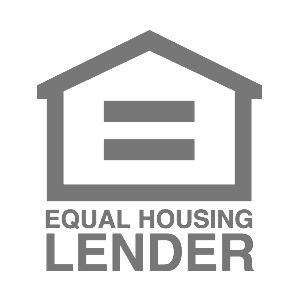
Being a homeowner can offer many benefits, including the ability to build home equity. But exactly what is home equity and why is it so important?
We have everything you need to know about home equity from how to calculate it to how to use it. Most importantly, we’ll explain how it could also be key to building wealth long-term.
In This Article
What is home equity?
Before you learn the best ways to use or build equity, you need to understand what home equity is. Simply put, home equity is the current value of your home minus what you still owe on your mortgage. If you come up with a positive number, you have equity.
How fast or slow home equity grows depends on property values and how much principal you pay down on your mortgage. Usually it’s a long-term effort, meaning the longer you are in your home, the more equity you can build. It doesn’t happen overnight.
Calculating your home equity
To figure out how much your home is worth and how much equity you may have, you can use a home equity calculator. This is useful if you’re thinking about selling your home or tapping into your equity for home improvements, debt consolidation or refinancing purposes.
3 Ways to Use Your Equity
Now that you know what home equity is, you need to know how to use it. Most commonly, homeowners use financing tools like a home equity line of credit, home equity loan, or mortgage refinance to help pay for home improvement projects, consolidate debt, or create an emergency fund. Here’s a look at three of the most common options to understand how it can work for you.
1. Home equity line of credit (HELOC)
A HELOC is a revolving line of credit that uses your house as collateral. The amount you have determines how much you can borrow. Like a credit card, you can tap into it when you need to, but you have to pay back the amount you borrow. A HELOC usually offers a lower interest rate than credit cards.
Because you only use what you need, when you need it, a HELOC is a good choice if you want to have access to funds to pay for anything from emergencies to home renovations.
2. Home equity loan (HELoan)
Unlike a HELOC, a home equity loan is when you borrow the whole amount as a lump sum. Instead of a revolving line of credit, you get all the money at once, and must make monthly principal and interest payments.
You pay back the loan over a set period of time, with interest that is usually set at a fixed rate. The amount of time it will take to pay off and the monthly amount you have to pay is all dependent on how much you borrowed and the loan terms you agreed upon with the lender.
3. Cash-Out refinance
You can refinance your mortgage for more than what you owe. Referred to as a cash-out refinance, you’ll receive the difference in cash to use as you please.
For example, if your home is worth $300,000, but your mortgage is only $200,000, you might do a cash-out refinance for a new loan of $275,000. You receive $75,000 in cash and start making new (and larger) mortgage payments.
How to Build Home Equity
It’s an investment with long-term results. Want to move it along a little faster? Here are some things you can start doing now that will help you build your home’s wealth.
Pay your mortgage biweekly
Biweekly payments can reduce how much interest you pay and help build your home equity. For instance, if you make your payments bi-weekly instead of monthly, you could pay off your mortgage faster. But before you consider this, speak with your lender to make sure they don’t charge extra for processing your additional payment.
Make home improvements
Improving your home could help increase your home’s value. But knowing which renovations could yield the best value for your home depends on where you live. So be sure to research the smartest place to start your improvements.
Take advantage of bonuses
If you’re expecting a bonus, or get one by surprise, any unexpected financial windfalls can go toward paying down your mortgage so you can build equity. Besides a bonus, windfalls could come from tax returns, an inheritance or a gift from a family member.
Cut your loan term in half
Refinancing your 30-year mortgage as a 15-year loan, you’ll build equity twice as fast. But while interest rates on shorter-term loans are usually lower, your monthly payments will be higher, so make sure an option like this fits your budget.
Ready to use the equity in your home?
If you do and you want to use it, you have options. Make sure you research what will work best for you and your financial goals.
Written by Rose Wheeler
Rose Wheeler oversees the blog’s writing team and creates content strategy for Prosper. With 15+ years of journalism experience, she has covered business and finance-related topics such as consumer finance, financial products, banking, credit, and money management. Previously, Rose served as Editor-in-Chief for Wealth Hub at Future, Deputy Editor at Forbes Advisor, and Content Editor/Strategist at Millennial Money and The Motley Fool. In her free time, she enjoys exploring new places, reading, and playing video games.
Eligibility for a home equity loan or HELOC up to the maximum amount shown depends on the information provided in the home equity application. Depending on the lender, loans above $250,000 may require an in-home appraisal and title insurance. Depending on the lender, HELOC borrowers must take an initial draw of the greater of $50,000 or 50% of the total line amount at closing, except in Texas, where the minimum initial draw at closing is $60,000; subsequent HELOC draws are prohibited during the first 90 days following closing; after the first 90 days following closing, subsequent HELOC draws must be $1,000, or more, except in Texas, where the minimum subsequent draw amount is $4,000.
The amount of time it takes to get funds varies. It is measured from the time the lender receives all documents requested from the applicant and depends on the time it takes to verify information provided in the application. The time period calculation to get funds is based on the first 4 months of 2023 loan fundings, assumes the funds are wired, excludes weekends, and excludes the government-mandated disclosure waiting period.
For Texas home equity products through Prosper, funds cannot be used to pay (in part or in full) non-homestead debt at account opening.
Depending on the lender, qualified home equity applicants may borrow up to 80% – 95% of their primary home’s value and up to 80% – 90% of the value of a second home. In Texas, qualified applicants may borrow up to 80% of their home’s value. HELoan applicants may borrow up to 85% of the value of an investment property (not available for HELOCs).
Home equity products through Prosper may not be available in all states.
All home equity products are underwritten and issued by Prosper’s Lending Partners. Please see your agreement for details.
Prosper Marketplace, Inc. NMLS# 111473
Licensing & Disclosures | NMLS Consumer Access


